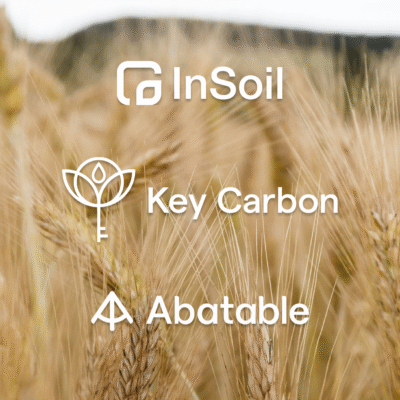In our introduction to this carbon procurement strategy series, we outlined why it’s important to build your carbon credit purchasing strategy today, four outlooks to consider when doing so, and seven key principles to keep in mind so that your strategy can be science-aligned. Now that we’ve discussed the stakes and benefits involved for the planet and your business when it comes to building your carbon credit strategy, we want to go deeper into how carbon credits can support your corporate sustainability goals.
How can carbon credits fit into your corporate sustainability strategy?
The first step is to understand what you want to achieve using carbon credits and how they fit in their broader sustainability and business strategy.
For example, airline companies may be looking to purchase carbon credits to meet their regulatory obligations under CORSIA. Software and technology companies (e.g. Microsoft) could be purchasing carbon credits, specifically removals, to meet their SBTi target. Alternatively, companies with supply chains which heavily rely on nature could be looking to support projects close to their suppliers to enhance the landscapes they depend on.
The most important thing to note is that carbon credits should not be used as a substitute for value chain abatement. Having a strong value chain reduction approach ensures your company doesn’t rely too much too much on carbon credits long term and helps your company avoid claims of greenwashing.
A company’s approach to carbon credits will define the claims they are able to make publicly, such as being climate neutral, net zero, or climate positive, which we explore in this blog.

The visual above explains three of the main pledges companies are making. All three of them rely to an extent on carbon credits.
- Carbon neutral: this is an achievement claim, meaning that companies tend to claim year on year that they are carbon neutral. They do so by purchasing enough carbon credits to offset their annual emissions. Carbon neutrality guidance tends to be outdated and does not prescribe to as stringent value chain reductions as net zero for example.
- Net zero: companies commit to reducing their carbon footprint to as close to 0 as possible (SBTi, ISO guidance) by their pledge date (typically 2040 or 2050). To claim net zero, companies must neutralise the carbon which they were not able to reduce using permanent carbon removal credits.
- Climate positive: also known as carbon negative is the idea that a company does more good than harm by supporting carbon projects and buying carbon credits which cover more than their annual emissions. This should be done in addition to stringent value chain reductions. This is the most ambitious pledge a company can make.
Additionally, carbon credits can be used to make climate contributions beyond your company’s value chain, which is known as beyond value chain mitigation (BVCM). BVCM does not have to be tied to a voluntary commitment like net zero or carbon neutral which can provide more flexibility to companies that want to optimise for quality over quantity of credits.
What should the scope of your procurement efforts be in tonnes? After determining the claims you want to make and which carbon credits will enable you to make said claims, you can define the scope of your carbon procurement efforts in tonnes.

Procurement needs in tonnes:
- Operational carbon neutrality: annual emissions of Scope 1 and 2 and some of Scope 3 = procurement needs
- Company carbon neutrality: annual emissions (Scope 1, 2 and 3) = procurement needs
- Net zero according to SBTi: 10% of baseline emissions yearly = procurement needs
- Climate positive: X times your annual emissions = procurement needs
In addition to the above claims, if you decide to pursue BVCM you can consider the following through avoidance, reduction, and removal credits:
- Offsetting the annual emissions of specific business activities or products
- Offsetting the annual emissions of specific scopes of emissions
- Offsetting 100% of your company’s annual emissions
Conclusion
Carbon credits have an important role to play in any corporate sustainability strategy. In order to determine their role, you must first consider your broader sustainability goals and public commitments. Then, you have to figure out just how many tonnes of carbon you need to abate in order to achieve the goals and public commitments your company has outlined. In future articles in this series, we’ll discuss how to: set a budget that will enable you to meet your goals (by, for example, using internal carbon pricing) , choose your projects, access the market, build your carbon portfolio, and carry out due diligence.
Can’t wait? Grab our procurement guide and watch our corresponding webinar.































































































